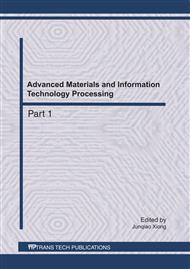p.785
p.791
p.797
p.802
p.808
p.812
p.818
p.823
p.829
The Study of Pressure-Based Technique for Target Acquisition in Pen User Interfaces
Abstract:
Pen pressure has enabled a new degree of freedom for interactions in pen-based user interfaces, which has been shown the potential in relevant studies [6-8]. In this paper, we present a new pressure-based technique called Pressure Cursor for target acquisitions, in particular for small targets. Pressure Cursor enhances target acquisition by employing pen pressure as a control variable to enlarge the cursor. Pressure Cursor uses quick-release in the final determination of selecting a target, being different from traditional pointing technique (clicking). This technique is especially helpful for small targets. We conducted a quantitative experiment to examine the performance of this technique and to reveal its significant benefits.
Info:
Periodical:
Pages:
808-811
Citation:
Online since:
July 2011
Keywords:
Price:
Сopyright:
© 2011 Trans Tech Publications Ltd. All Rights Reserved
Share:
Citation:


